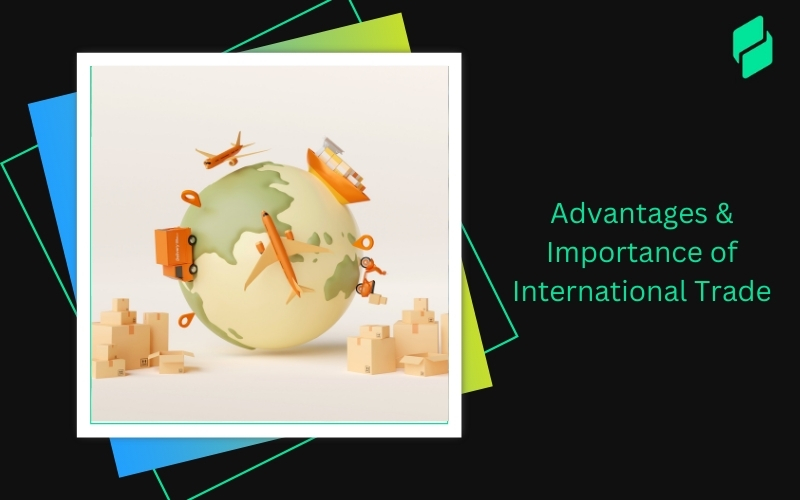Optimize your business: use unlimited savings with Pazago fulfilled now!
Get Started ->India's extensive coastline plays a pivotal role in global trade, serving as a gateway for international commerce. The country's major ports serve as more than just transit points; they are the lifeblood of the nation's economy.
These maritime hubs contribute significantly to domestic trade, generate substantial employment opportunities, and drive both local and national economic development.
As we delve into the world of India's busiest ports, we'll explore how these critical infrastructure assets shape the country's economic landscape and position India as a key player in international trade.
List of Major Ports in India
India boasts 13 major ports, each contributing uniquely to the country's maritime trade. Let's take a closer look at these vital gateways:
- Kolkata Port (West Bengal): Kolkata Port is India's only major riverine port, situated on the Hooghly River. It boasts a rich history dating back to the British era and serves as a crucial gateway for trade with Southeast Asian countries.
- Paradip Port (Odisha): Paradip Port has coal handling capabilities and significant cargo infrastructure. It's strategically located to serve the mineral-rich hinterlands of Odisha and plays a vital role in the export of iron ore.
- Visakhapatnam Port (Andhra Pradesh): The deepest natural port in India, crucial for central and southern trade. Visakhapatnam Port is known for its ability to handle large vessels and its importance in the iron ore export industry.
- Kamarajar Port (Tamil Nadu): Kamarajar Port, formerly known as Ennore Port, is India's first corporatised major port. It specializes in handling coal for nearby thermal power stations and has been expanding its capacity to handle other cargo types.
- Chennai Port (Tamil Nadu): A significant port in the Bay of Bengal with extensive railway operations. Chennai Port is one of the oldest ports in India and serves as a major hub for automobile exports.
- V.O. Chidambaram Port (Tamil Nadu): Also known as Tuticorin Port, it's a key player in southern India's maritime trade. The port is famous for its pearl fishing and plays a crucial role in connecting India with Sri Lanka and other East Asian countries.
- Cochin Port (Kerala): Strategically located on the Malabar Coast, handling a variety of cargo. Cochin Port is known for its natural harbor and is a significant player in spice exports and cruise tourism.
- New Mangalore Port (Karnataka): The only major port in Karnataka, known for handling iron ore and petroleum products. It serves as a gateway for coffee exports from the region and has modern facilities for handling containerized cargo.
- Mormugao Port (Goa): Mormugao Port specializes in iron ore exports, handling a significant portion of India's iron ore trade. It also serves as an important hub for cruise tourism, capitalizing on Goa's popularity as a tourist destination.
- Mumbai Port (Maharashtra): One of India's largest ports in terms of size and maritime trade. Mumbai Port has been a cornerstone of India's maritime history and continues to be a crucial player in handling diverse cargo, including crude oil and chemicals.
- Jawaharlal Nehru Port (Maharashtra): India's largest container port, handling a majority of the country's containerized freight traffic. JNPT is equipped with state-of-the-art facilities and is constantly upgrading to maintain its position as India's premier container port.
- Deendayal Port (Gujarat): Formerly known as Kandla Port, it's the largest port by cargo volume. Deendayal Port is particularly important for trade with Middle Eastern countries and specializes in handling petroleum products and fertilizers.
- Port Blair (Andaman and Nicobar Islands): The only major port in India's island territories. Port Blair serves as a lifeline for the Andaman and Nicobar Islands, handling essential supplies and playing a crucial role in the islands' tourism industry.
Busiest Ports by Cargo and Traffic

While all of India's major ports contribute significantly to the country's maritime trade, some stand out as the busiest in terms of cargo handling and traffic. Let's explore the top performers:
- Jawaharlal Nehru Port (JNPT):some text
- Handles 55% of India's container traffic
- In FY 2022, it managed 75.997 million metric tonnes of cargo
- Known as the container hub of India
- Mundra Port:some text
- Major gateway for Northern India
- Handles a variety of bulk cargo
- Known for its advanced infrastructure and efficiency
- Deendayal Port (Kandla):some text
- Largest port by cargo volume
- In FY 2022, it handled an impressive 127.781 million metric tonnes
- Important for food grains and oils
- Paradip Port:some text
- Handled 116.133 million metric tonnes in FY 2022
- Focuses on coal handling with significant cargo infrastructure
- Visakhapatnam Port:some text
- Managed 69.03 million metric tonnes in FY 2022
- Crucial for central and southern trade due to its deep natural harbor
- Mumbai Port:some text
- Handled 59.891 million metric tonnes in FY 2022
- Largest in terms of size and maritime trade
- Chennai Port:some text
- Processed 48.564 million metric tonnes in FY 2022
- Significant port in the Bay of Bengal with extensive railway operations
Also Read: Import and Export Trade: Understanding Its Impact and Strategies In India
Now that we've looked at the big players, let's see how these ports contribute to India's economic growth in broader terms.
Key Economic Contributions
India's major ports are crucial drivers of economic growth and development. Their contributions extend far beyond mere cargo handling:
- Contribution to domestic trade and the blue economy:some text
- India's major ports facilitate 95% of the country's trade by volume and 70% by value, contributing to domestic trade and the blue economy
- Play a vital role in India's blue economy initiatives, promoting sustainable use of ocean resources
Also Read: List Of Profitable & Best Products To Export From India
- Role in employment generation:some text
- Direct employment in port operations, logistics, and related services
- Indirect employment through port-led industrialization and development of coastal communities
Also Read: How To Find Export Agents For Your Business?
- Impact on local and national economic development:some text
- Attract investments in port-based Special Economic Zones (SEZs)
- Stimulate growth in ancillary industries such as warehousing, transportation, and ship repair
- Contribute significantly to state and national GDP
Also Read: How Much Profit Is There In Export Business
With significant contributions come significant challenges. Let's dive into what the future holds for these bustling hubs.
Challenges and Future Prospects
Despite their impressive growth, India's busiest ports face several challenges that need addressing for future prosperity:
- Infrastructure development and capacity expansion:some text
- Need for modernization of existing port infrastructure
- Requirement for deeper drafts to accommodate larger vessels
- Expansion of hinterland connectivity through road and rail networks
- Technological advancements and automation:some text
- Implementation of Port Community Systems for seamless data exchange
- Adoption of automated container handling equipment
- Integration of Artificial Intelligence and the Internet of Things for improved efficiency
- Environmental impact and sustainability measures:

- some text
- Implementation of green port initiatives
- Adoption of renewable energy sources for port operations
- Focus on reducing carbon footprint and promoting sustainable practices
So, what is the government doing to ensure our ports are ready for the future? Let's discuss the policies and initiatives in play.
Government Initiatives and Policies

The Indian government has introduced several initiatives to boost the efficiency and capacity of the country's ports:
- Sagarmala Programme:some text
- Aims to modernize ports and enhance their connectivity
- Focuses on port-led development through industrialization and coastal community development
- Maritime Agenda:some text
- Strategic developments for future port expansion
- Targets to increase port capacity to 3,500+ million tonnes by 2025
- International trade agreements and their impact on port activities:some text
- Free Trade Agreements (FTAs) boosting cargo traffic at major ports
- Initiatives like "Maritime India Vision 2030" to enhance India's maritime sector globally
Also Read: Import and Export Trade: Understanding Its Impact and Strategies In India
Streamline Your Export Process with Pazago
Ever wondered how you can manage your entire export shipment in one place? Imagine the ease of handling all your export needs—documentation, container booking, cargo tracking, FOREX conversions, and insurance—all through a single platform.
With Pazago, this is now possible.
Pazago’s portal is designed to simplify every step of your export journey:
- Secure Your Documentation: Manage all your export documents seamlessly.
- Book Containers: Easily book the right containers for your cargo.
- Track Your Cargo: Monitor your shipment’s progress in real-time.
- FOREX Conversions: Handle currency exchanges with ease.
- Insurance and Quality Inspections: Arrange insurance and quality checks directly through the portal.
Why Choose Pazago?
This level of integration means you no longer have to juggle multiple platforms or worry about overlooked details. Pazago brings everything together, offering you peace of mind and allowing you to focus on what truly matters—growing your business.
Wrapping it all up, the future looks bright for India's ports. Here's why.
Conclusion
India's major busy ports are the backbone of the country's international trade, playing a crucial role in economic growth and development. From the container hub of Jawaharlal Nehru Port to the cargo giant Deendayal Port, each contributes uniquely to India's maritime prowess.
As these ports continue to evolve, overcoming challenges through infrastructure development, technological advancements, and sustainable practices, they are set further to cement India's position as a global maritime powerhouse.
With government initiatives like Sagarmala and the Maritime Agenda paving the way, the future looks promising for India's port sector, heralding a new era of growth, efficiency, and global connectivity.
For businesses looking to navigate the complexities of international trade through India's busiest ports, Pazago offers a comprehensive solution. Our platform streamlines the entire trade journey, from procurement to fulfilment, ensuring seamless operations across India's major ports.
With real-time cargo tracking, efficient communication tools, and hassle-free international payment solutions, Pazago empowers businesses to leverage the full potential of India's maritime infrastructure. Ready to set sail on your global trade journey? Connect with Pazago today and experience the future of import-export trade management.


.png)








